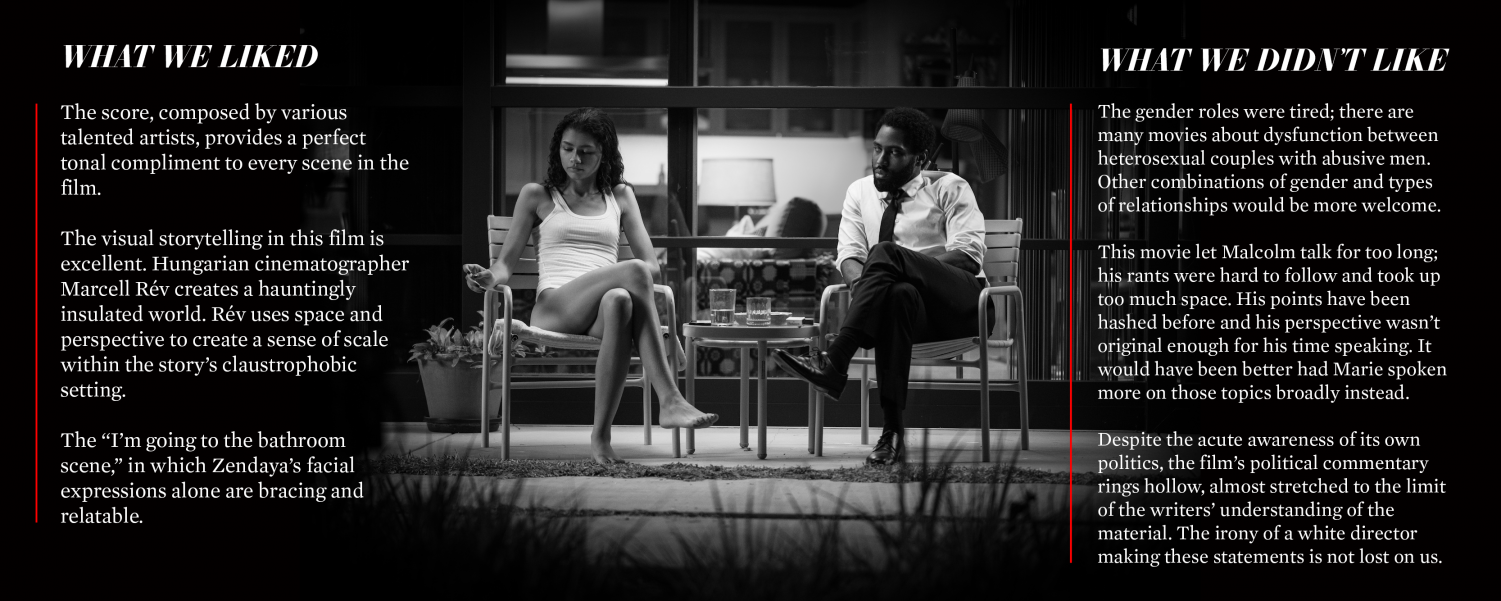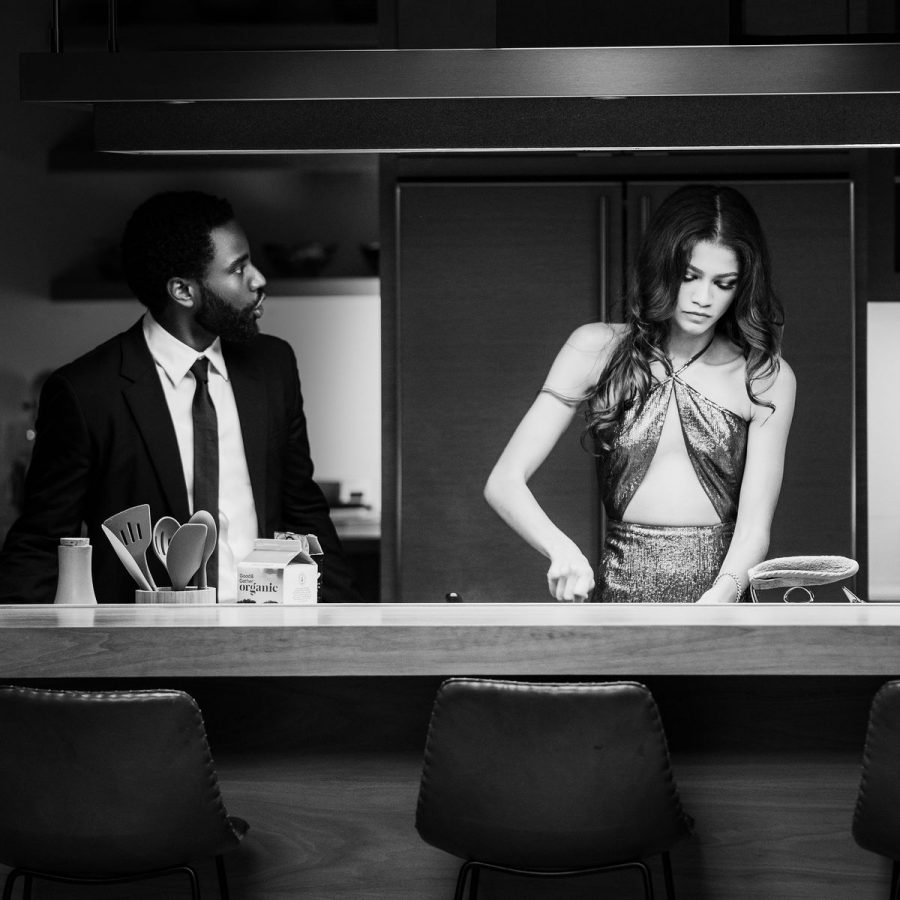Malcolm & Marie Analyzes Art and Abuse, to Varying Degrees of Success
Malcom & Marie takes place over the course of one relationship-testing evening.
Editor’s Note: This article contains descriptions of an abusive relationship.
Curtains up on a black and white shot of a car driving on an empty road. Yes, curtains: this eerie shot sets the stage for a film that is equal parts theater and cinema. Enter, stage heartbreak, our title characters: Malcolm and Marie.
Written and directed by Sam Levinson, Malcolm & Marie stars Zendaya and John David Washington as a couple navigating a turbulent, codependent relationship. Over the course of one night’s ongoing argument, both characters tell their stories in a series of oppositional monologues, in tour-de-force performances of dysfunction.
The argument’s inciting incident is off-screen; Malcolm, a filmmaker, and his girlfriend Marie are returning home after his movie premiere, where he didn’t thank her during his speech. The characters analyze this omission from multiple angles. Was it an accident, or a deliberate minimization of Marie’s investment in Malcolm, without which he may not be able to live, never mind make a movie? The film contends with artistry and gender roles, questioning what an artist’s responsibility is to his muse, and what a man’s is to the women in his life.
Set in one location with only two characters, the film is reminiscent of a staged theater performance. Even the actors’ movements seem at once both deliberate and natural. This theatricality highlights the film’s internal discourse on moviemaking as a form of expression, the black-and-white lens deliberately harkening to film history. In this way, Malcolm & Marie is meta, with much of the character motivation revolving around filmmaking, specifically the experiences and anxieties of being a Black filmmaker.
Yet this commentary is hollow and belies an apparent lack of planning for any concrete end. For all of Marie and Malcolm’s commentary on the racial insensitivity of the film industry, this particular thematic plotline never finds its narrative conclusion. That Sam Levinson, a white man, wrote and directed Malcolm & Marie cannot be ignored in context with this oversight.
But despite its pitfalls, the character work in Malcolm & Marie is compelling. Haunting shots of Marie standing in silence, coupled with excellently written monologues, craft the image of a complicated woman dealing with the fallout of having her story stolen from her. Malcolm is similarly complex. He prioritizes his work over his conflict with Marie, as both he and the viewer question whether his love for Marie inspired his film, or whether his attraction was to her story alone.
While each character makes a compelling case for their role and merit within the relationship and Malcolm’s film, Marie’s argument is ultimately more convincing. Marie is underappreciated and abused — and she lays this out explicitly. Zendaya masterfully brings Marie to life as she meditates on authenticity and the pain of having her story stolen. She acknowledges that Malcolm’s true feelings are conveyed via his work, so the audience is left wondering what Malcolm said in his film that manages to redeem him to her. What does Marie understand about Malcolm that makes her love him through cruelty and manipulation? Is she making her own choices, or is she still being manipulated by Malcolm into staying with him, even as she names his abuse?
Marie’s tendency to forgive Malcolm, frequently resetting the terms of their argument, speaks to the codependency of their relationship. This film is at its best — and most emotionally devastating — in its articulation of the codependency and violence that comes from that kind of abuse. There are moments where the camera remains stationary, capturing stillness in the house before the calm is disrupted by the jarring and angry movements of the actors.
This pattern is epitomized by the film’s now-iconic scene of Malcolm sitting by himself and eating mac and cheese. At that moment, Malcolm is on a campaign of verbal assault against Marie while retaining a singular focus on devouring his bowl of food, to the extent that he goes off-camera to get a refill. The mundanity of his activity combined with the force of his abuse is chilling. The camera deliberately remains steady and does not follow Malcolm as he gets up, even as his tirade continues. The camera reminds the audience of the pervasiveness of emotional abuse: The abuser doesn’t need to be physically present or focused on you to harm you.
Although the dichotomy of antagonist and protagonist is clear from any even mildly feminist perspective, the types of manipulation and violence that occur in Malcolm & Marie go beyond gender. Anybody can find themselves at moments embodying aspects of this dysfunction in their own life, and one must always ask themselves if they could be Malcolm at times — so wrapped in their own passion that they stomp on the people that they love in the process. In giving Marie space to articulate Malcolm’s unacceptable behavior, regardless of whether they stay together, Malcolm & Marie says that it’s the victim’s opinion that matters the most in these relationships.











